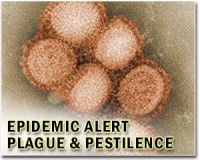| . |  |
. |
New Delhi (UPI) Oct 22, 2010 Deaths from malaria in India may be as much as 10 times higher than official World Health Organization estimates, researchers say. A new survey suggests malaria kills between 125,000 and 277,000 people per year in India alone, far higher than the 16,000 toll WHO counts, NewScientist.com reports. Estimates of malaria deaths in India are based on death rates recorded in clinics, corrected in an attempt to account for people missed by the health system, but a study by international researchers has found that these numbers have been vastly underestimated. Researchers from the University of Toronto and other universities have been collaborating with the Indian government on a survey of 1.1 million households across India to improve the country's health statistics. They have been recoding "verbal autopsies," in which householders describe how family members died, to count deaths that were never officially diagnosed. "When we've done studies of malaria control in Indian villages, we've seen so many really nasty cases of the disease that I always wondered why the official estimate was so low," Richard Peto of the University of Oxford says. "Malaria deaths happen out in the countryside. They're invisible to the healthcare system." Another researchers says he is not surprised the study found more malaria deaths then the official estimate, but calls it "startling" that as many as 86 percent never saw a doctor. "India has a space program but cannot provide prompt access to malaria treatment in Orissa state [where deaths are highest]," Bob Snow of Oxford University said. "This study will surely be a wake-up call."
earlier related report "Nigeria is reporting its highest caseloads of cholera in recent years, 38,173 cases, including 1,555 deaths as of October 20," said UNICEF spokeswoman Marixie Mercado. "My understanding is that it is peaking right now. It seems like that it has been contained but there are still new cases," from already affected states mainly in the north, she told journalists in Geneva. On August 25, Nigeria's health ministry warned that the epidemic was starting to pose a threat to the entire country after 6,437 cases were recorded including 352 deaths this year. Cholera is endemic in Nigeria, but the caseload started to accelerate from 1,661 cases in 2007, reaching 13,691 last year, according to UN data. UNICEF said 80 percent of those who fell ill were women and children. The average death rate in Nigeria ia about 4.5 percent, but it rises over 10 percent in at least three states that are affected by flooding and are home to large numbers of displaced people -- Plateau (20 percent), Sokota (16.9 percent) and Gombe (11.1 percent). "Seasonal factors such as the rainy season with flooding, as well as poor hygiene conditions and population movements in the area contribute certainly to this unusually higher incidence of cholera," said World Health Organisation spokeswoman Fadela Chaib. Cholera is caused by a bacteria, transmitted through water or food that has typically been contaminated by human fecal matter. It causes serious diarrhoea and vomiting, leading to dehydration. It is easily treatable with rehydration salts and antibiotics. But with a short incubation period, it can be fatal if not treated in times.
Share This Article With Planet Earth
Related Links Epidemics on Earth - Bird Flu, HIV/AIDS, Ebola
 WHO rushes help to deadly north Haiti disease outbreak
WHO rushes help to deadly north Haiti disease outbreakGeneva (AFP) Oct 22, 2010 UN health experts were rushing to northern Haiti to help tackle a sudden outbreak of diarrhoeal disease that has left 150 dead, with tests underway to see if it was cholera, a WHO spokeswoman said. "For the time being we cannot confirm that it is cholera," World Health Organisation spokeswoman Fadela Chaib told journalists, underlining that the country has not reported an outbreak of the dis ... read more |
|
| The content herein, unless otherwise known to be public domain, are Copyright 1995-2010 - SpaceDaily. AFP and UPI Wire Stories are copyright Agence France-Presse and United Press International. ESA Portal Reports are copyright European Space Agency. All NASA sourced material is public domain. Additional copyrights may apply in whole or part to other bona fide parties. Advertising does not imply endorsement,agreement or approval of any opinions, statements or information provided by SpaceDaily on any Web page published or hosted by SpaceDaily. Privacy Statement |